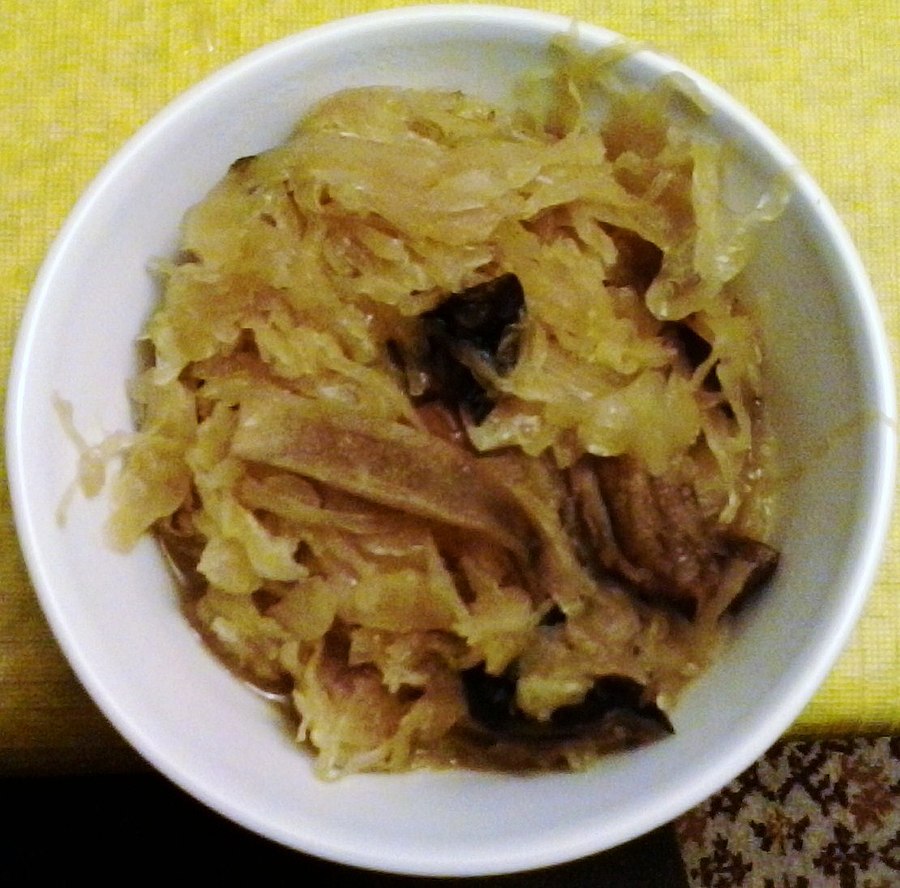Facts About Kapusta kiszona duszona
Zasmażana kapusta, commonly referred to simply as kapusta in Poland, is a cherished traditional dish featuring braised or stewed sauerkraut or cabbage. This hearty dish is usually prepared with ingredients such as bacon, mushrooms, onions, or garlic, and is seasoned with a blend of salt, pepper, and sometimes bay leaves, caraway seeds, sugar, paprika, and apples.
Kapusta is typically enjoyed alongside boiled potatoes and pairs excellently with pork chops, pork cutlets, veal, or game meats. The consistency of this dish can vary significantly—some versions are thin and soup-like, while others are thickened with flour or cooked until they reach a mashed potato-like texture. In comparison to German sauerkraut, kapusta offers a milder, less sour flavor.
The primary ingredients in kapusta include cabbage, mushrooms, onions, and fatty pork such as rib meat, bacon, or smoked kielbasa. A roux is often employed to thicken the dish, imparting a rich and comforting texture.
Kapusta even finds its way into literature. In Herta Müller's novel "The Hunger Angel" (Atemschaukel), a chapter explores the protagonist’s connection to kapusta, using it as a poignant symbol of his life as a prisoner and his dreams of freedom.

 Lithuania
Lithuania